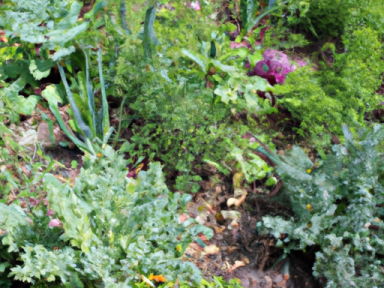Succession Planting: Ensuring Continuous Harvests in Times of Crisis
In times of crisis or disaster, the availability of fresh food can become uncertain. Whether it’s a natural disaster, economic collapse, or any other event that disrupts our normal way of life, being able to grow your own food can mean the difference between survival and desperation.
One strategy that has stood the test of time is succession planting. This age-old practice involves planting multiple crops throughout the growing season, ensuring a continuous supply of fresh produce for you and your family.
The Wisdom of Succession Planting
Succession planting is based on the principle that not all crops mature at the same time. By staggering your plantings, you can extend your harvest season and avoid a sudden depletion of your food supply.
When disaster strikes, stores may be quickly emptied and food shortages can occur. Having a succession planting system in place can provide you with a reliable source of fresh produce, even when traditional supply chains are disrupted.
The Steps to Succession Planting
Succession planting requires careful planning and organization. Here’s a step-by-step guide to get you started:
- Know your crop: Research and understand the specific planting and maturity requirements for each crop you intend to grow. This will help you determine the ideal timing for each planting.
- Create a planting schedule: Based on your crop knowledge, create a planting schedule that spans the entire growing season. Determine how many successions you can plant for each crop while considering factors like climate and available space.
- Prepare your soil: Ensure that your soil is fertile and well-drained. Clear any existing debris and incorporate organic matter to provide the optimal conditions for your plants.
- Start your first succession: Begin by planting your first crop according to the recommended timeline. Make sure to provide adequate water and nutrients to support its growth.
- Plant subsequent successions: As your first crop matures, plant the next succession of the same crop or choose another crop that can be grown during that time. Maintain a steady rotation, planting new crops as soon as the previous ones are harvested.
- Maintain and harvest: Regularly monitor your plants for pests, diseases, and nutrient deficiencies. Take appropriate measures to address any issues. Harvest your crops as they become ready to ensure continuous production.
Additional Tips for Success
Here are a few additional tips to enhance your succession planting strategy:
- Choose crops with varying maturation times to ensure a consistent food supply throughout the season.
- Consider planting quick-growing crops, such as radishes or lettuce, between slower-growing ones to make the most of your available space.
- Implement companion planting techniques to naturally repel pests and maximize the use of your garden area.
- Save and store seeds from your harvest to use for future plantings, ensuring sustainability and self-reliance.
Conclusion
In times of crisis, food security is paramount. By implementing the practice of succession planting, you can safeguard yourself and your loved ones against potential food shortages. Remember, preparedness is key, and taking action now will empower you to face whatever challenges may lie ahead.




GIPHY App Key not set. Please check settings